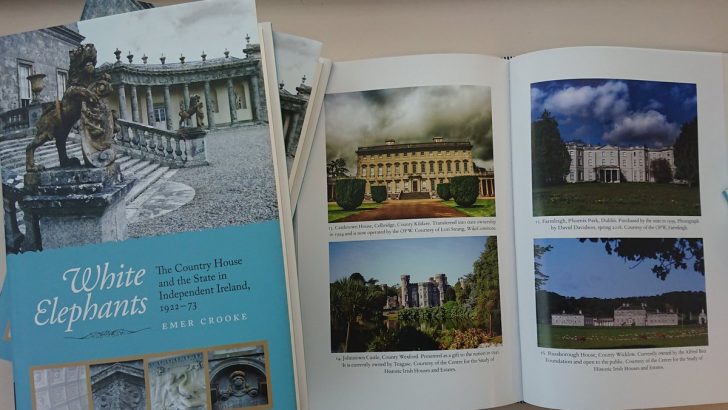White Elephants: The Country House and the State in Independent Ireland
by Emer Crooke (UCD Press, €40.00)
These days, when no couple ever seems to get married in their native parish anymore, a country house hotel often plays a more important role in any case than the church. With wedding celebrations now lasting three or four days party space is clearly needed. And from the advertisements one comes to believe that there is hardly a great house of any kind, still standing that is not a country house hotel.
What a change this is from the days of the Land War when such great houses were seen as the stronghold of rapacious landlords, or from the 1920s and 30 where they were seen as bastions of lingering British influence in Ireland better burnt down or unroofed to save the payment of rates.
In her new book Dr Emer Crooke explores the shifting Irish attitudes to the great house, focusing largely on the period from 1922 to 1973. Based on extensive research in records of all kinds, but especially State papers, she outlines the moods and attitudes as they changed. The focus is perhaps rightly on the question of cost of care and their value to the overall economy. Even now the developing heritage industry has to pay its way.
She notes at the very beginning of the book that Castletown House, which was one of the first houses which raised a volume of demands for its preservation, that in 2017 some 666,541 persons visited Castletown’s parklands, only 32,866 visited the house. But these figures may be deceptive, given the nature of the wedding and recreational use alluded to above.
Developments
In any case the developments of the last half century are outside the scope of this book. She wishes to explore how the State itself responded to the problem of preservation and reuse.
Her book will be found of great value to many kinds of readers. However because of its wide range the detail on individual cases is often limited: as on Elizabeth Bowen, whose book Bowen’s Court is essential reading, or on Derrynane House, or on Kenmare House, both of which caused scandals in their day.
She writes in a careful and judicious style, dealing with what were difficult matters for the State. It is hard for the Free State to put money into Big Houses while cutting the state pensions – a scandal of another kind. It is likely that this book will have a permanent place in collections dealing with Irish heritage as whole, not just architectural matters.
For the local historian it will provide instances from other places that may well illuminate the conditions in their own townlands. But this is an academic book; it is not light reading.
(She says the situation in Northern Ireland was different for there the landlord class maintained, through the Orange Order, their political clout down to the 1960s, when Unionism began to take on a more aggressive working class and lower middle class aspect. The current leader of the DUP is far from being “a belted earl”. )
As recently as 2011 Crooke says it was argued that “traditionally the audience for the historic house has been narrow, and recent research demonstrates that this is still the case”. But such a claim contrasts with the situation, not just in Britain next door, but across Europe. Where heritage has been preserved and respected it generates value for the house itself and the local economy. If in Victorian times a great house employed as many people as a small factory, these days it can employ an entire town in some places.


 Peter Costello
Peter Costello
